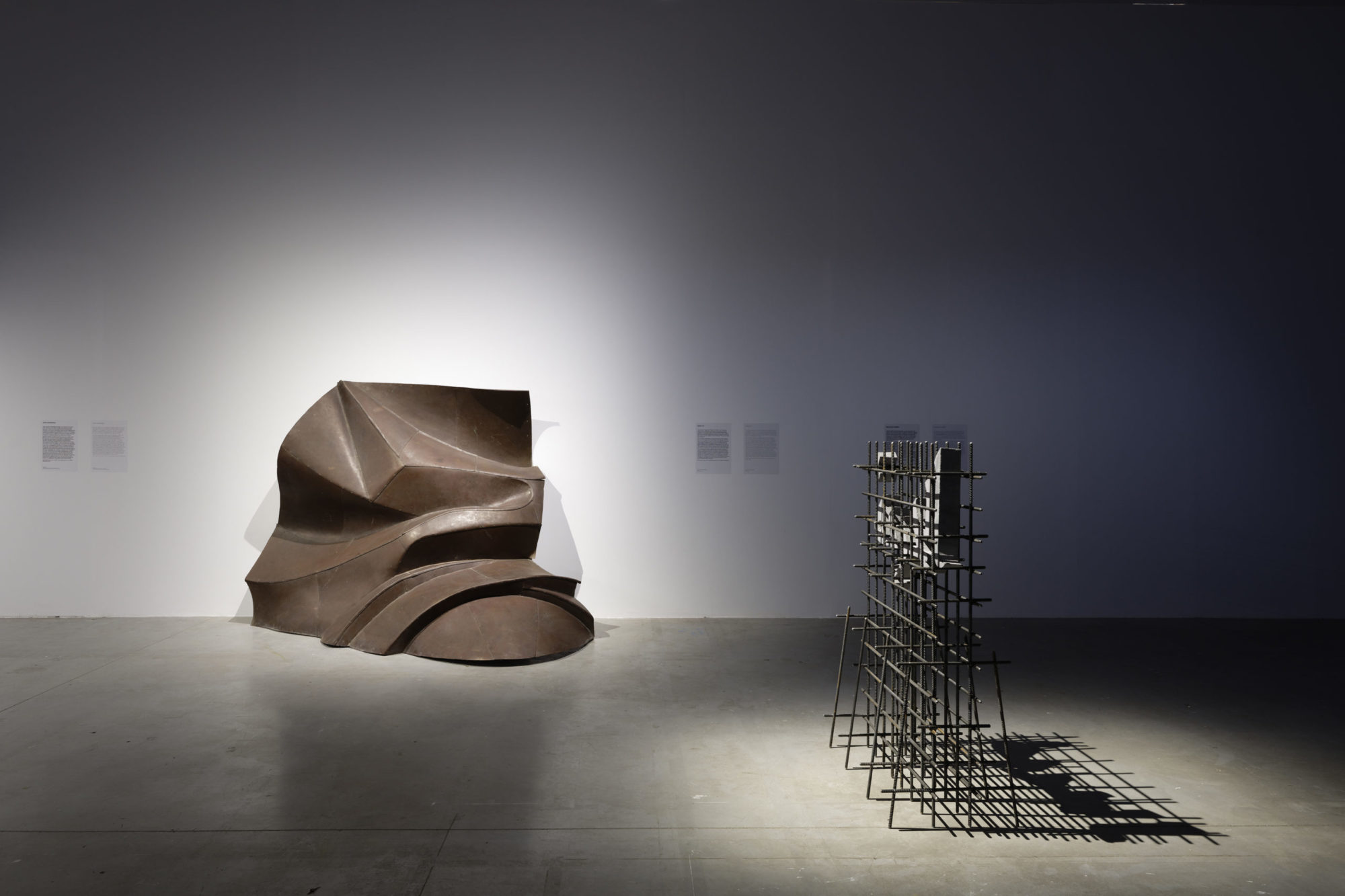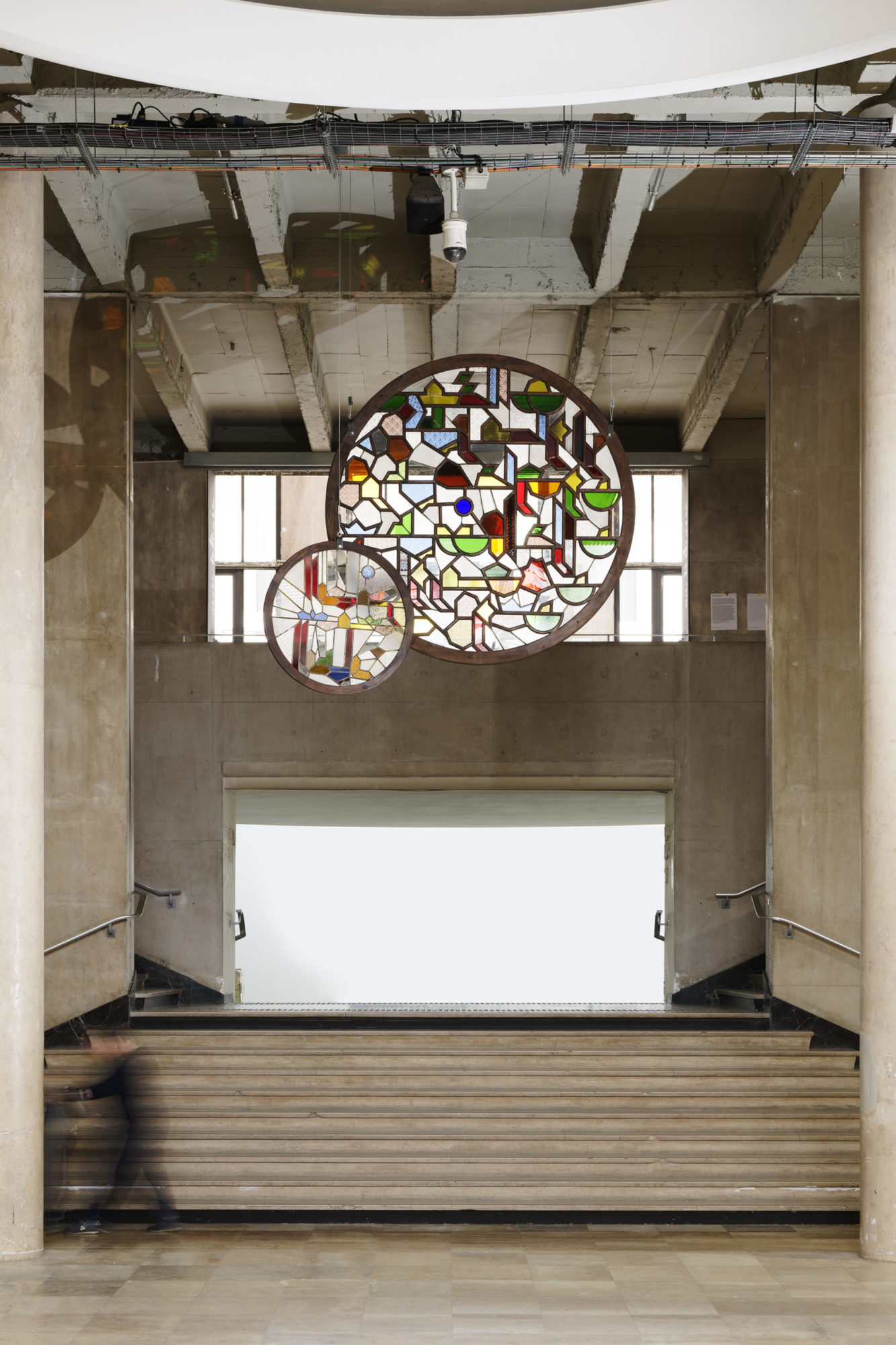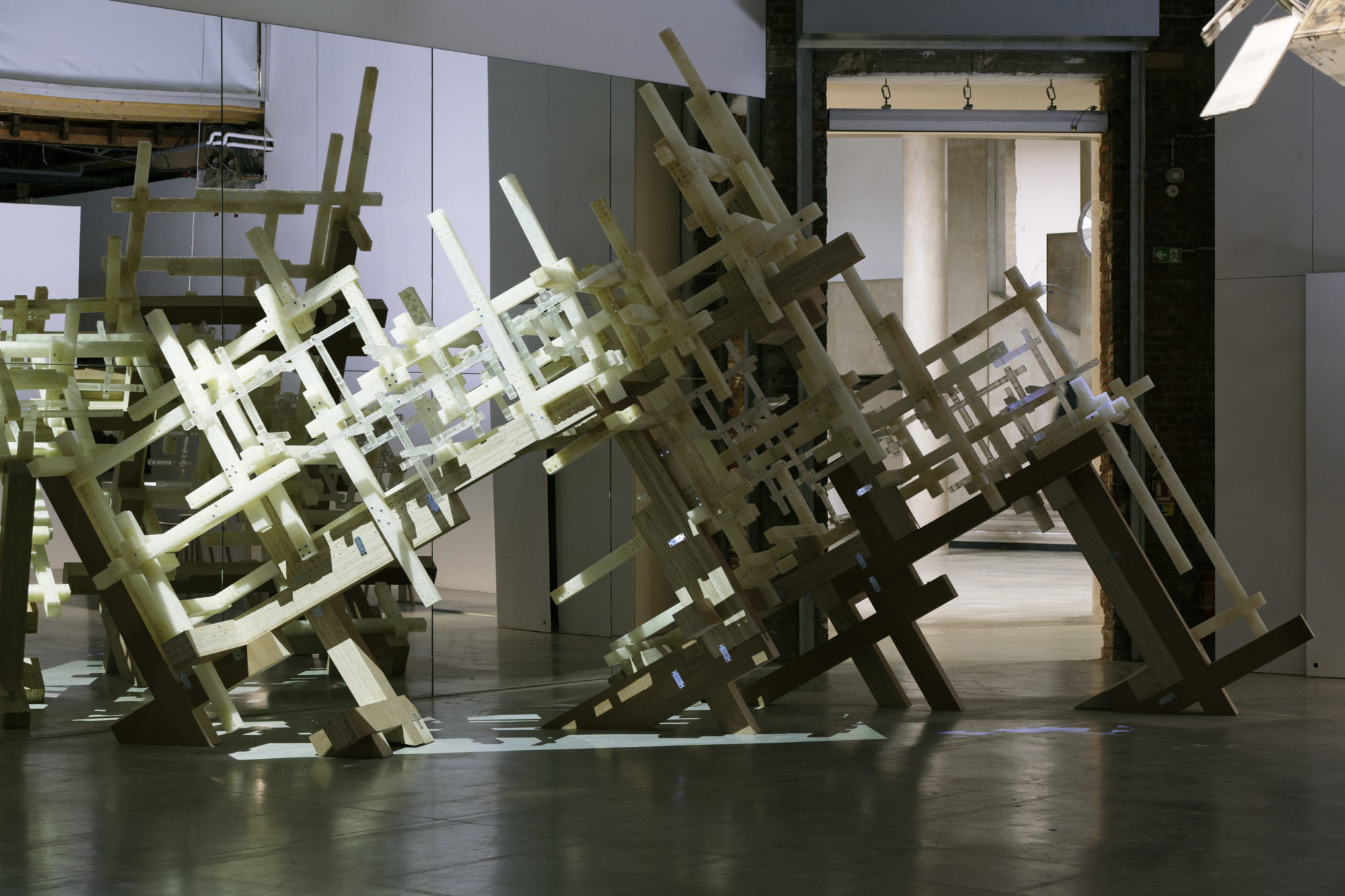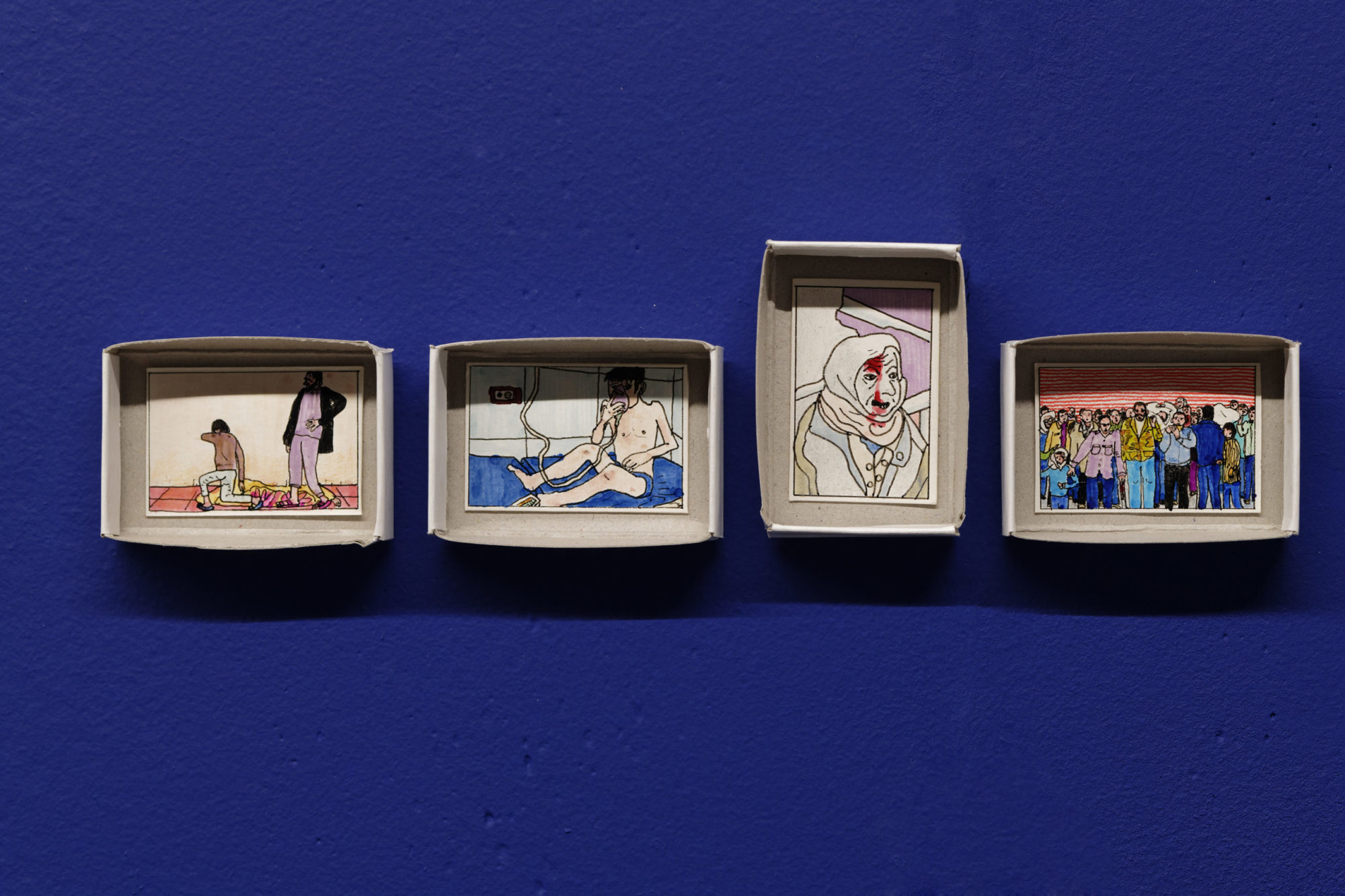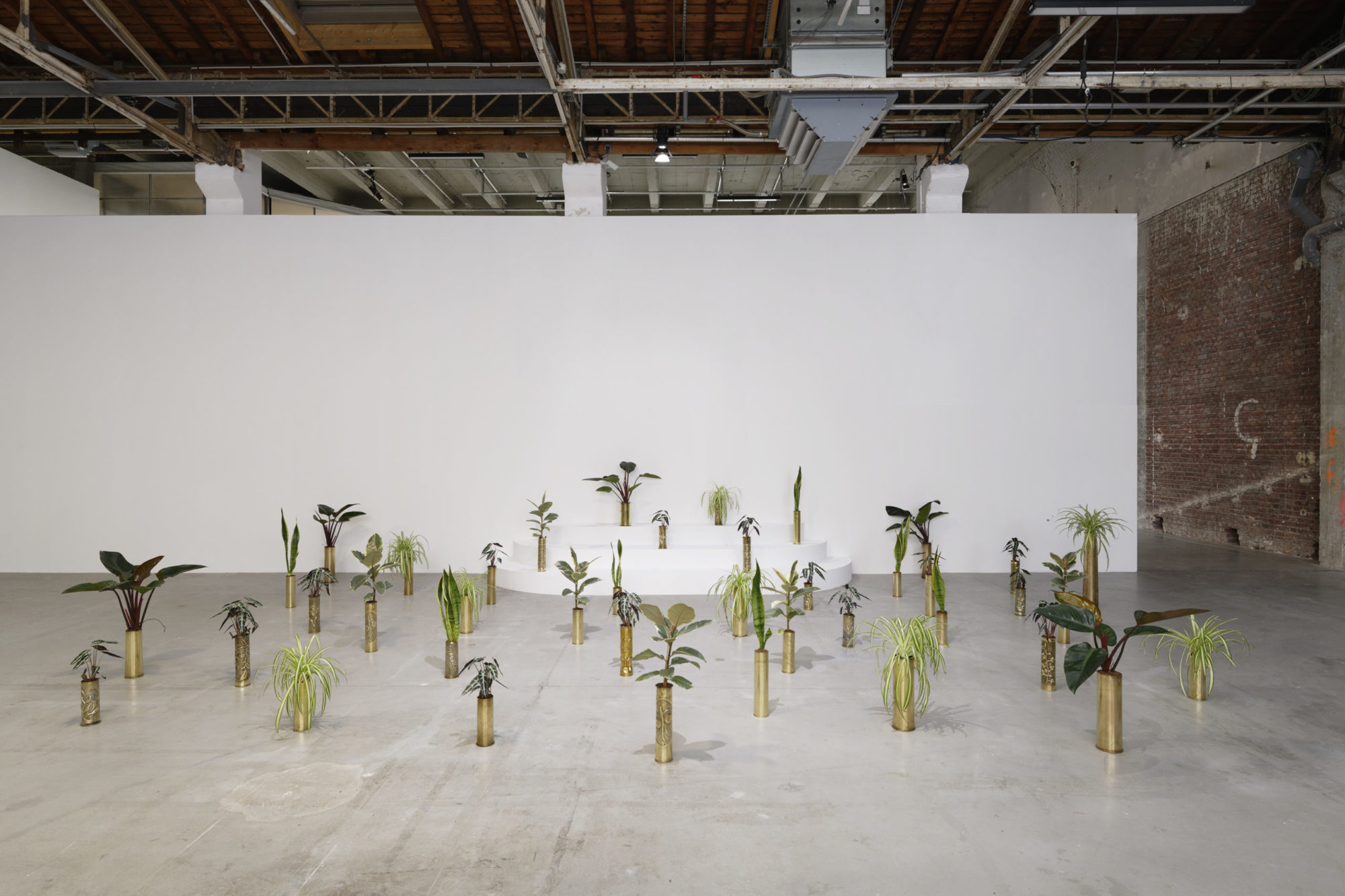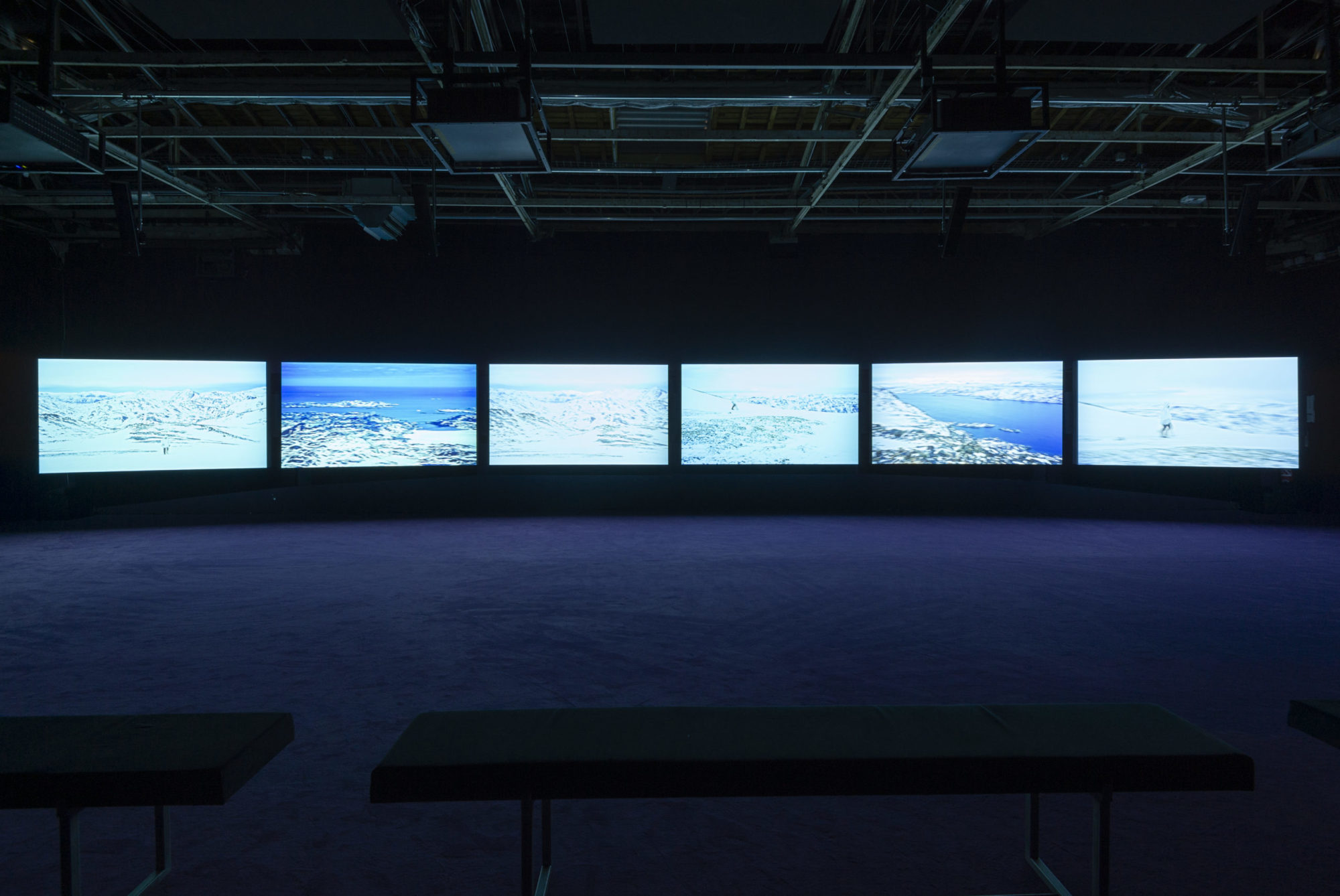Notre Monde Brûle (Our World Is Burning)

Shirin Neshat, Our House Is on Fire, 2013, Digital C-print, ink, dimensions vary [photo: Aurélien Mole ; courtesy of the artist, Palais de Tokyo, Paris; Gladstone Gallery, New York/Brussels; and Mathaf : Arab Museum of Modern Art, Doha]
Share:
How do we conceive of humanity’s impact upon the planet? This question is central to Notre Monde Brûle (Palais de Tokyo, February 21–September 13, 2020), an exhibition styled as a polemic and a reflection that aims “to incite a debate in this time of the Capitalocene.” Art is often justified through its political relevance. When such work is successful, it can refract the world with exceptional intimacy. The question posed by Notre Monde Brûle is one that encompasses all behaviors, histories, and modes of being. Here the art is asked to reach beyond its own specificity, and I wanted to know how this would be done.
Visitors who descend into the lower-level galleries of the Palais de Tokyo are greeted by a trio of artworks by Danh Vō, Mustapha Akrim, and Sara Ouhaddou. Vō and Akrim both look to the collapse of democratic ideals, the former in the forms of a fragmented Statue of Liberty, the latter through the Arabic word for law imprisoned behind a metal grate. Together these works prompt an interpretation—this is a world coming undone, a sentiment echoed loudly by the exhibition’s title. Hanging from the ceiling are Ouhaddou’s stained-glass windows, whose abstract panels incorporate the poetry of Berber women. The complex relationships set the tone for an exhibition whose primary theme seems to be catastrophe in all its varied forms.
Danh Vō and Mustapha Akrim, installation view, Our World is Burning, 2020 [photo: Aurélien Mole; courtesy of the artists and Palais de Tokyo, Paris]
If the artworks near the stairway serve as a prologue to Notre Monde Brûle, the first gallery looks to the recent economic “mutations” of Qatar, where its curator, Abdellah Karroum, serves as the director of Doha’s Arab Museum of Modern Art (Mathaf). The country’s rapidly accelerating economy serves as a backdrop against which the exhibition operates, but Notre Monde Brûle quickly spins beyond that peninsular landmass, into Syria, Iraq, Algeria, the world. The first gallery alone brings about encounters between Raqs Media Collective’s Mancunian moth in the Industrial Age and 1970s port infrastructure as re-imagined by Sophia al Maria. Perhaps Francis Alÿs’ series of fictionalized maps would have better framed the exhibition’s terrain. His rudimentary masses are labelled not with country names or geographical landmarks but rather sets of endemic oppositions: Us/Them, Longing/Belonging, and Migrant/Tourist, among others.
The exhibition is premised, in part, upon interweaving ecological destruction and political reflection. One of the few works to directly negotiate these legacies is Amina Menia’s National Liberation Football, a video installation that looks at how the 1958 foundation of Algeria’s Équipe du FLN de football operated within the independence movement. Across three screens, Menia uses interviews with writer Slimane Zeghidour and former French-Algerian player Rachid Mekhloufi to frame archival footage. At one point, Zeghidour notes how “colonized people are valued for their physical traits,” a proposition that could have functioned as the exhibition’s connective tissue, had it been taken up elsewhere. Yet Notre Monde Brûle references only obliquely the colonial histories that remain relevant to contemporary Middle Eastern politics.
Sara Ouhaddou, Sin ithran, ur mqadan, rousn / Deux astres, au déséquilibre, se brulent, 2020, circular stained glass, cedar wooden frame, steel strapping, 51.2 x 90.6 inches [photo: Aurélien Mole, courtesy of the artist and Palais de Tokyo, Paris]
Notre Monde Brûle succeeds most when its scope is focused upon individual narratives, as in Shirin Neshat’s haunting portraits of people who lost loved ones during the 2011 Egyptian Revolution. The photographs are larger than life and lovingly shot, with every wrinkle and crease tenderly captured in inky black and white. Similarly intimate are Bady Dalloul’s A country without a Door or a window and Mounira Al Solh’s I strongly believe in our right to be frivolous, which both contend with the human toll of the Arab Spring revolutions. Dalloul re-creates images of the Syrian civil war as broadcast by the media in miniature cartoonish drawings suffused with pathos. Likewise, Solh’s quick sketches of refugees magnify the personal. For both, the public narrative can resonate more widely only if it is humanized.
Raqs Media Collective, Alive, with Cerussite and Peppered Moth, 2017, 3D printed PLA pastic, cast polyester resin, plywood, video projections, variable dimensions [photo: Aurélien Mole; courtesy of the artist, Palais de Tokyo, Paris and Mathaf: Arab Museum of Modern Art, Doha]
Bady Dalloul, A country without door or a window, 2016-2019, dimension variable [photo: Aurélien Mole; courtesy of the artist and Palais de Tokyo, Paris] Exhibition view of « Our World is Burning », Palais de Tokyo (21.02 – 17.05.2020)
The trouble with the exhibition, however, is that it assumes the history and context of one place can be transposed elsewhere. In Sammy Baloji’s installation Untitled, for example, verdant houseplants grow out of hollow munition shells. These tubular cases were first manufactured in the Katanga region of the Democratic Republic of Congo. The work is spare and poignant, and part of Baloji’s larger interrogation of Congo’s past, but its relationship to the exhibition is more difficult to grasp. The title Notre Monde Brûle “explicitly refers to the human disasters generated by the successive conflicts” in the Middle East, a geographical and historical region to which the Congo does not belong. But using the Middle East’s “numerous societal transformations” to tease out questions of global ecology fails when such links are vague. In the case of Baloji’s installation, when set within an imprecise curatorial frame, the lack of context both compresses the work’s specificity and undermines its inherent politics.
Sammy Baloji, Untitled, 2018, 41 shell cases (1914-1918 / 1939-1945), house plants, variable dimensions [photo: Aurélien Mole; courtesy of the artist and Palais de Tokyo, Paris] Exhibition view, « Our World is Burning », Palais de Tokyo (21.02 – 17.05.2020)
This sort of lapse can be seen in the relationship constructed between Oriol Vilanova’s Outremer with Michael Rakowitz’s reconstructed artifacts. The slideshow projections of Outremer show photographs taken at the Musée national des arts asiatiques Guimet, whose founding collection of Asian artifacts was donated by Émile Guimet in the late 19th century. The politics around such artifacts differ widely from ones that surround objects looted after the US invasion of Iraq, as explored in Rakowitz’s series of colorful facsimiles, but the exhibition appears to equate the two. Such flattening is inevitable when so many different identities and cultures are viewed with the same set of parameters. Not to say that each country requires a different set of questions; rather, the weight of what those questions may reveal is not necessarily equal.
By using the term Capitalocene to define its interconnectivity, Notre Monde Brûle fails to untangle the conditions to which these works speak. The word can be useful but also overapplied, as if its very presence serves as justification alone. Certainly, this complaint seems to fit Notre Monde Brûle, in that the exhibition largely fails to propose solutions. An exception is John Akomfrah’s Purple, a sweeping, searing video that presents an image of exploitation. Tracing the history of our current climate catastrophe, Akomfrah’s film is a heartbreaking elegy to the natural world and a stirring portrait of humanity. According to the exhibition’s wall text, the show seeks to incorporate “as broadly as possible the ecological catastrophes embodied by the immensely destructive forest fires from Amazonia to Siberia, without forgetting California.” The distance between Akomfrah and Menia, or Menia and Baloji, however, feels as large as the planet the show seeks to define, and Notre Monde Brûle does not probe interconnectivity as a relational force. The exhibition fails to establish a sense of community and instead sets up these objects as isolated endeavours. So much of the work shown, although potent and generous, feels out of time and unmoored from this larger, scorching land.
John Akomfrah, Purple, 2017, 6 channel HD colour video installation, 15.1 surround sound, 62’00’’, variable dimensions [photo: Marc Domage ; courtesy of the artist, Palais de Tokyo, Paris; Smoking Dogs Films and Lisson Gallery, Londres/New York/ Shanghai]
Coda:
Because it is small and relatively flat, Paris has always felt exceptionally walkable to me. After we went to the Palais de Tokyo, my boyfriend and I crossed the Pont de l’Alma toward Saint-Germain-des-Prés, before heading back across the Seine, through the Louvre’s courtyard, and toward Canal Saint-Martin. The streets were crowded because it was Saturday and warm, and because campaigners were out in the last days before the municipal elections. A little more than a week later, France’s confinement began.
Notre Monde Brûle was the last exhibition I saw before London, where I live, embraced its own quarantine. Now, the only art available to me must be viewed through the computer. There has been a lot of debate among my friends as to whether virtual exhibitions work. Part of me, admittedly a large part, finds them joyless. Scale is an issue online. So is chance discovery. And museums are fundamentally spaces in which to commune: to see something in person involves a bodily experience. I love watching what people are drawn towards or repelled by, what children think of certain statues, how the guards move between rooms and paintings. I am lucky, though. Lucky to have legs that can make it through long shows, lucky to have an ICOM pass that gets me into pricey institutions; I am reminded of how lucky I am all the time, especially in this terrible, claustrophobic moment. Digital exhibitions are one way to open a world to those who cannot afford to participate, and I hope we will strive to make that experience better and richer.
Still, I am not sure how I would have approached Notre Monde Brûle had I been able to see the exhibition online only. Perhaps the show’s thesis would have been clearer to me. Perhaps I contributed to the disorder by pinging too much between objects and artists. Retrospectively, little has changed regarding my feelings toward the jostling narratives, but after weeks of life confined to two rooms, that chaos is now wholly desirable. Right now, there is only one story and only one thing to talk about, and I miss the commotion of overlapping lives.
Grace Linden is a writer and art historian based in London. Her work has been featured in the Burlington Contemporary, Hyperallergic, A
